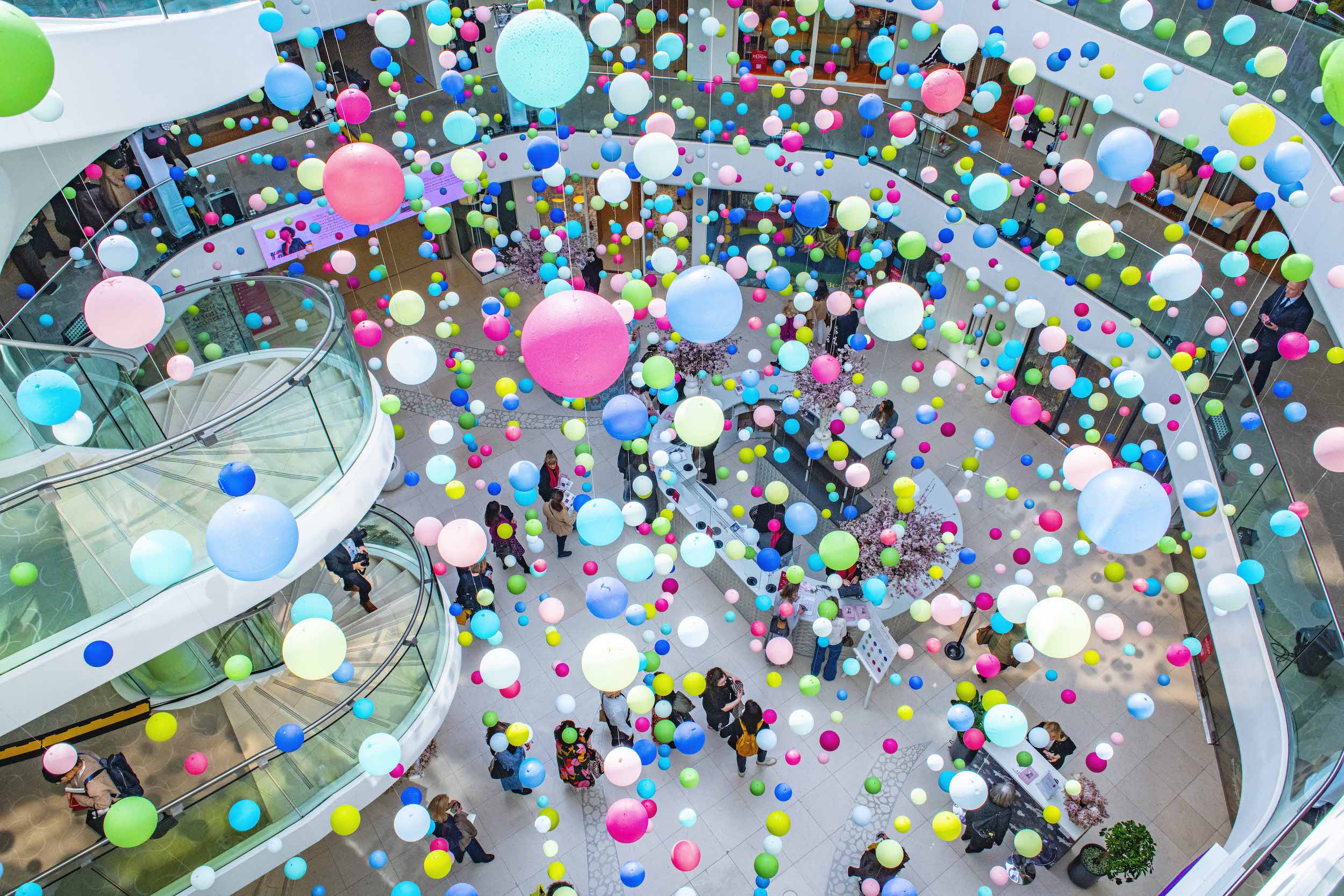London Design Week returned this week to Chelsea Habour’s Design Centre. Effect Magazine’s Dominic Lutyens rounds up the unmissable highlights.
Some might question the market for pleated fabric lampshades and voluminous curtains after decades where people have favoured low-maintenance, simply furnished homes. Traditional, high-end soft-furnishings can feel removed from real life, especially when embellished with frilly passementerie – elaborate trimmings, such as tassels and braid. Yet as any visitor to this year’s London Design Week (on until March 18) will testify, the sector is thriving.
The Design Centre venue in London’s Chelsea Harbour houses 120 showrooms, distributed over three floors overlooking a light-filled atrium. Although it also stocks furniture, lighting and other homeware, fabrics are its forte.
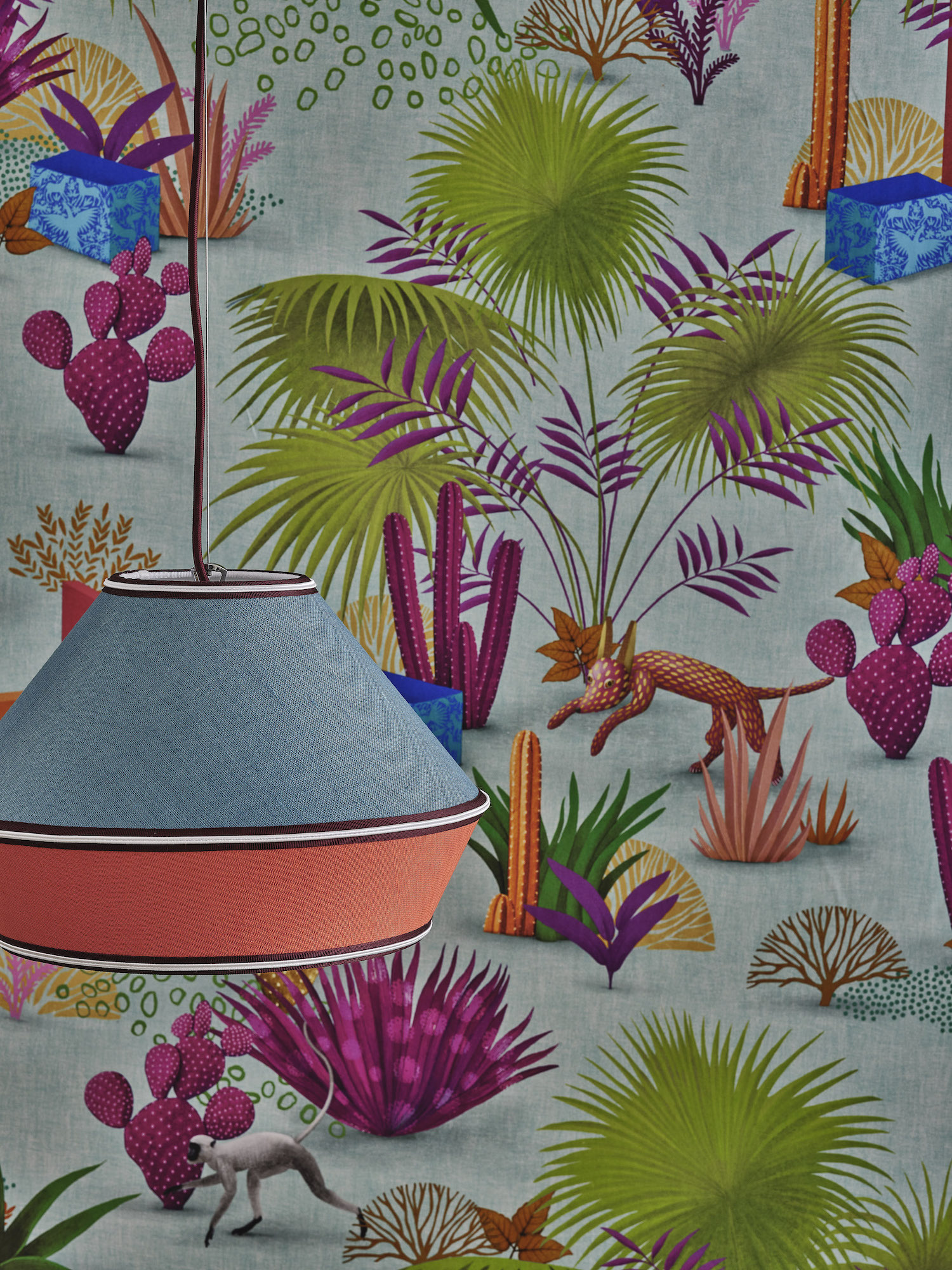
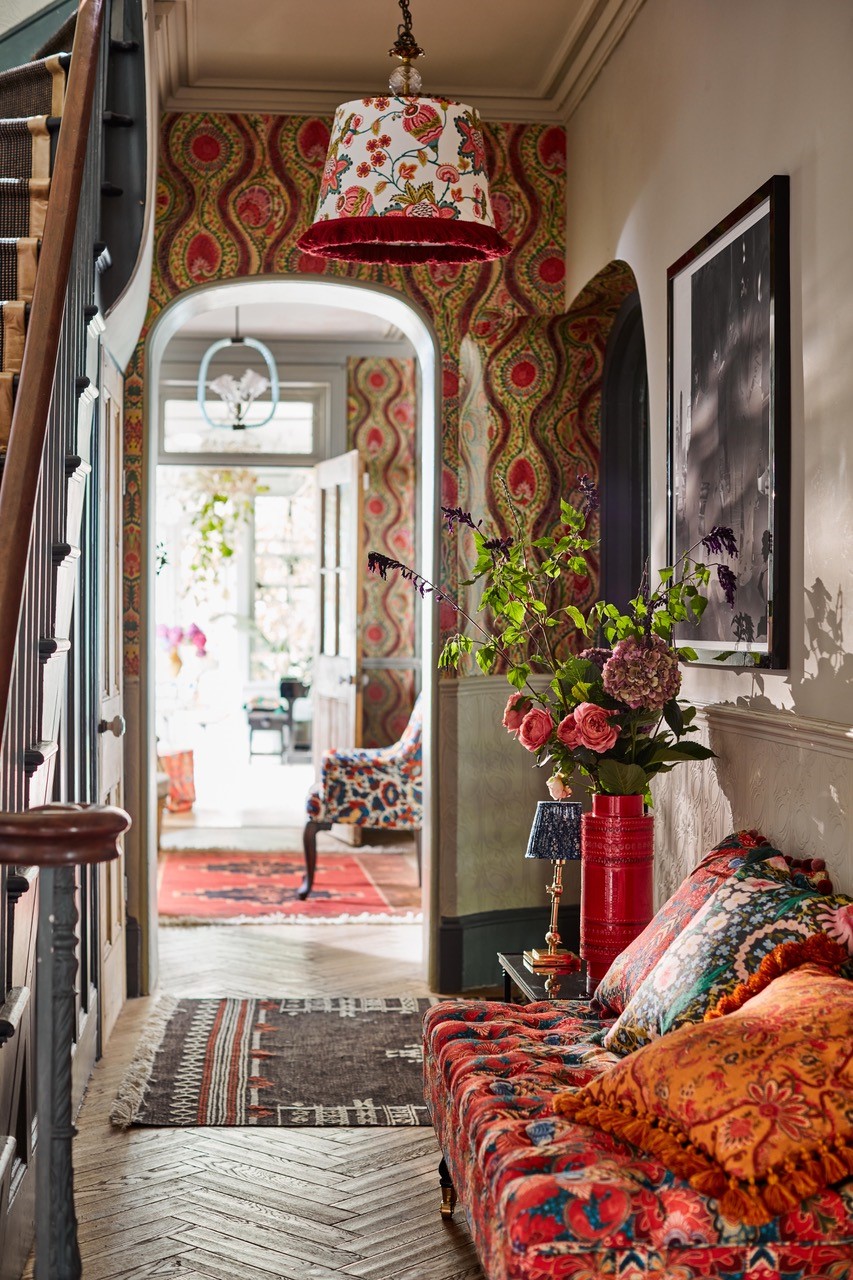

Viewed objectively, the upscale soft-furnishings world isn’t out of step with interiors trends. Maximalism has encouraged people to reappraise them. And a younger generation, with a soft spot for antique textiles, has recognised the charm – not to mention theatricality – of flamboyant wallpapers and fabrics that are likely to have been anathema to their minimalist-loving parents.
For well over a decade, British wallpaper company Cole & Son, known for its bold, super-sized patterns, has enjoyed a huge revival. Since 2011, hip London brand House of Hackney has emulated Victorian and Arts and Crafts wallpapers and chintzy prints with its busy, nature-inspired wallpapers. And young interior designer Rachel Chudley typically combines vibrant wall colours, patterned upholstery fabrics and antique textiles, from tapestries to embroidered suzanis from Central Asia.
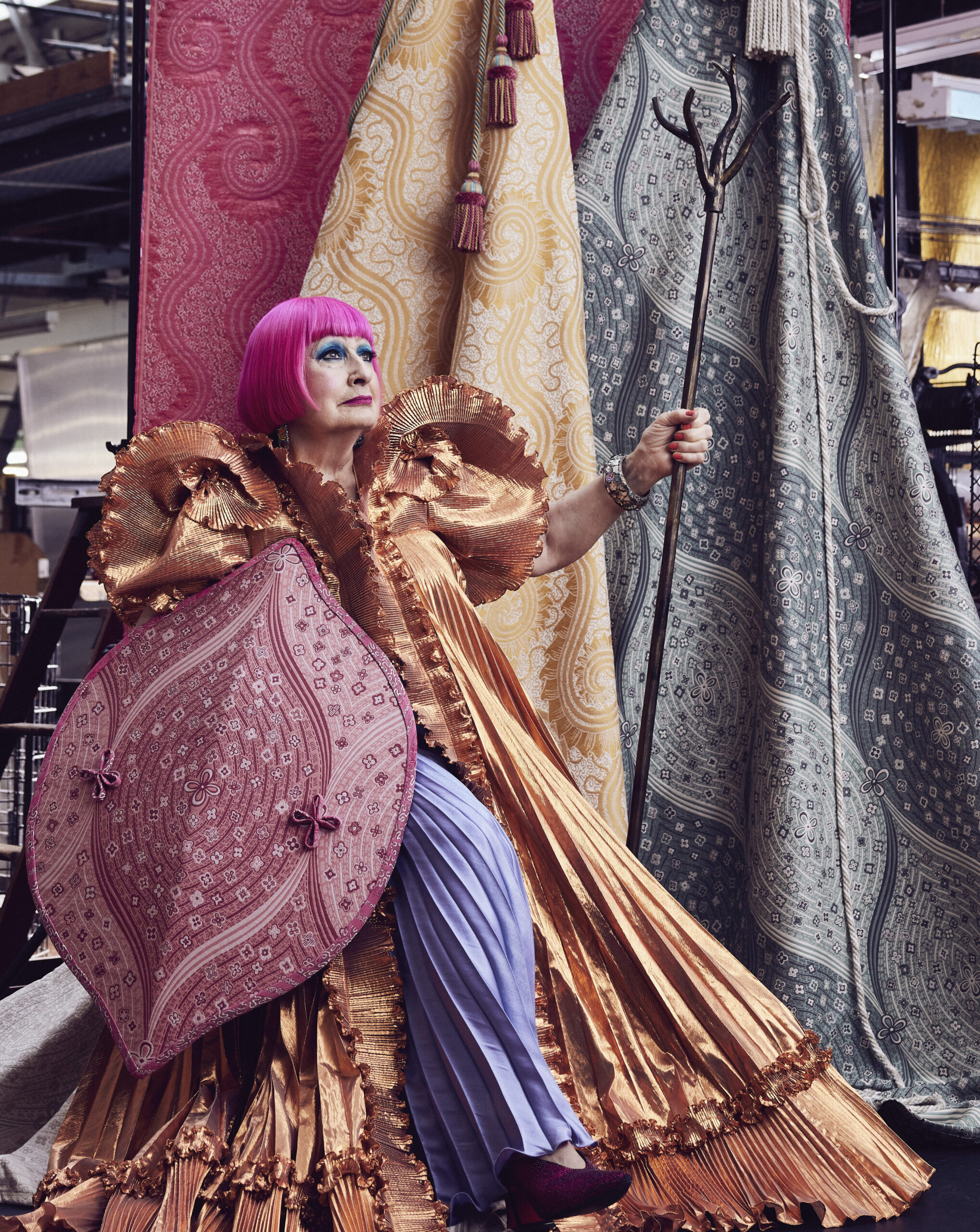
The Design Centre’s showrooms are open all year, from Monday to Friday, so this isn’t a conventional exhibition space. In light of this, London Design Week needs to offer a raft of other attractions, chiefly its extensive programme of industry-focused talks and product launches heralding a new season. The latter offer visitors the opportunity to discover fresh trends.
“There’s a bold experimentation with colour and abstraction this season,” notes Arabella McNie, London Design Week’s creative director, who has identified 20th-century French artist Sonia Delaunay as a key influence on fabric trends for spring/summer 2022. “Delaunay-influenced shapes, patterns, her vibrant palette and recurring motifs – concentric circles, fractured squares and rhythmic compositions – can be seen across many new fabrics and wallcoverings.”
There is also a practical, educational aspect to London Design Week: it hosts workshops demonstrating crafts essential to the creation of many products available at The Design Centre. This year, there are workshops on block-printing held by Morris & Co, custodian of original William Morris wallpaper and fabric designs, and on passementerie, overseen by French trimmings specialist Houlès, among many others.
Speakers this year include Minnie Kemp, daughter of Kit Kemp, co-owner of Firmdale Hotels, who talked about hotel design and ways to recreate it in a residential context, and the inimitably flamboyant fashion and textile designer Zandra Rhodes, who introduced visitors to her new Britannia collection of two furnishing fabrics created for Suffolk-based weaving house Gainsborough (the talks can also be viewed online here).
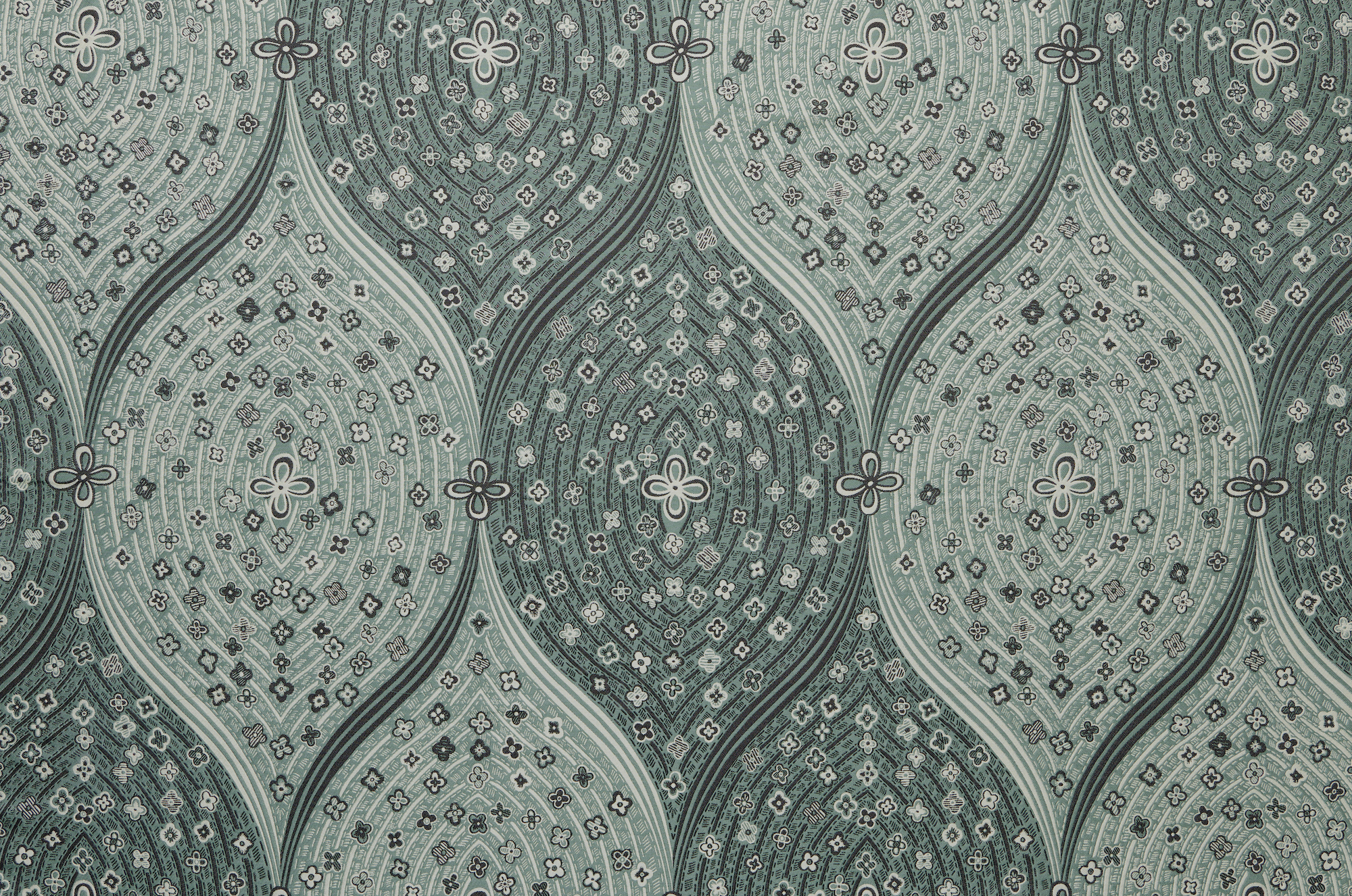
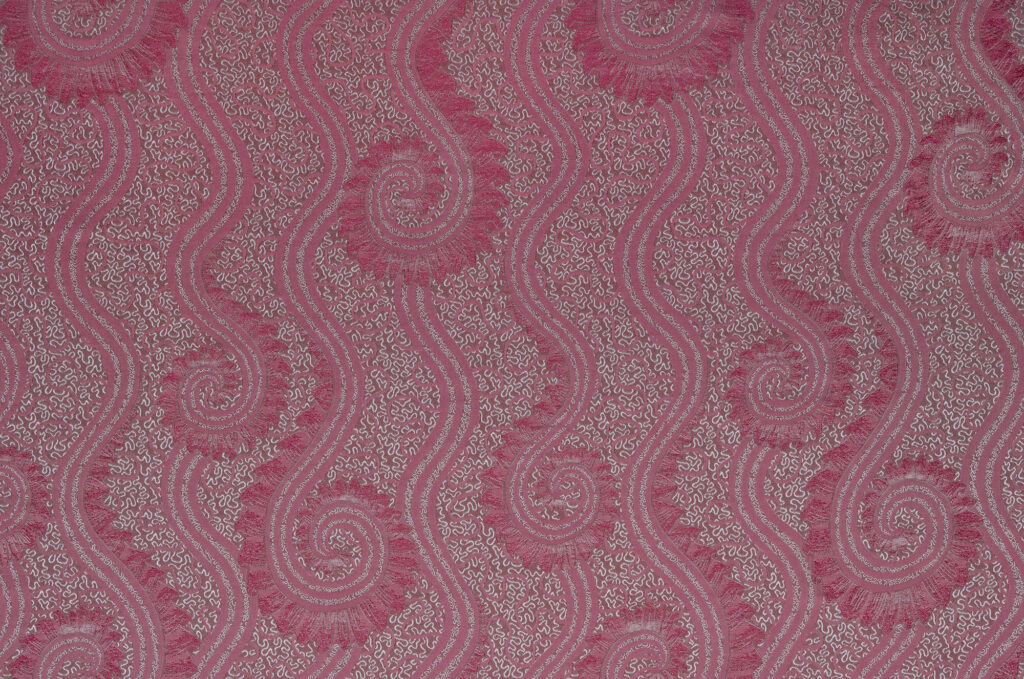
Witty publicity shots of Rhodes’s new collection picture her impersonating Britannia – or her take on the female warrior. After all, Rhodes still sports her trademark fuchsia bob and peacock-blue eyeshadow. The mock-swashbuckling image includes a bolt of her fabric Fabulous Frills, dramatically displayed like a ship’s sail. This reprises her signature, abstract wiggle motif, which has been blown up into gigantic, serpentine arabesques. Her other design, O-Gee Whizz, is based on the ogee – a type of curve found in architecture that also inspired an ogee-based print by House of Hackney. O-Gee Whizz features another pet Rhodes motif – daisies. Loosely forming winding daisy chains, these have a carefree quality that we perhaps sorely crave after the constraints imposed by the pandemic.
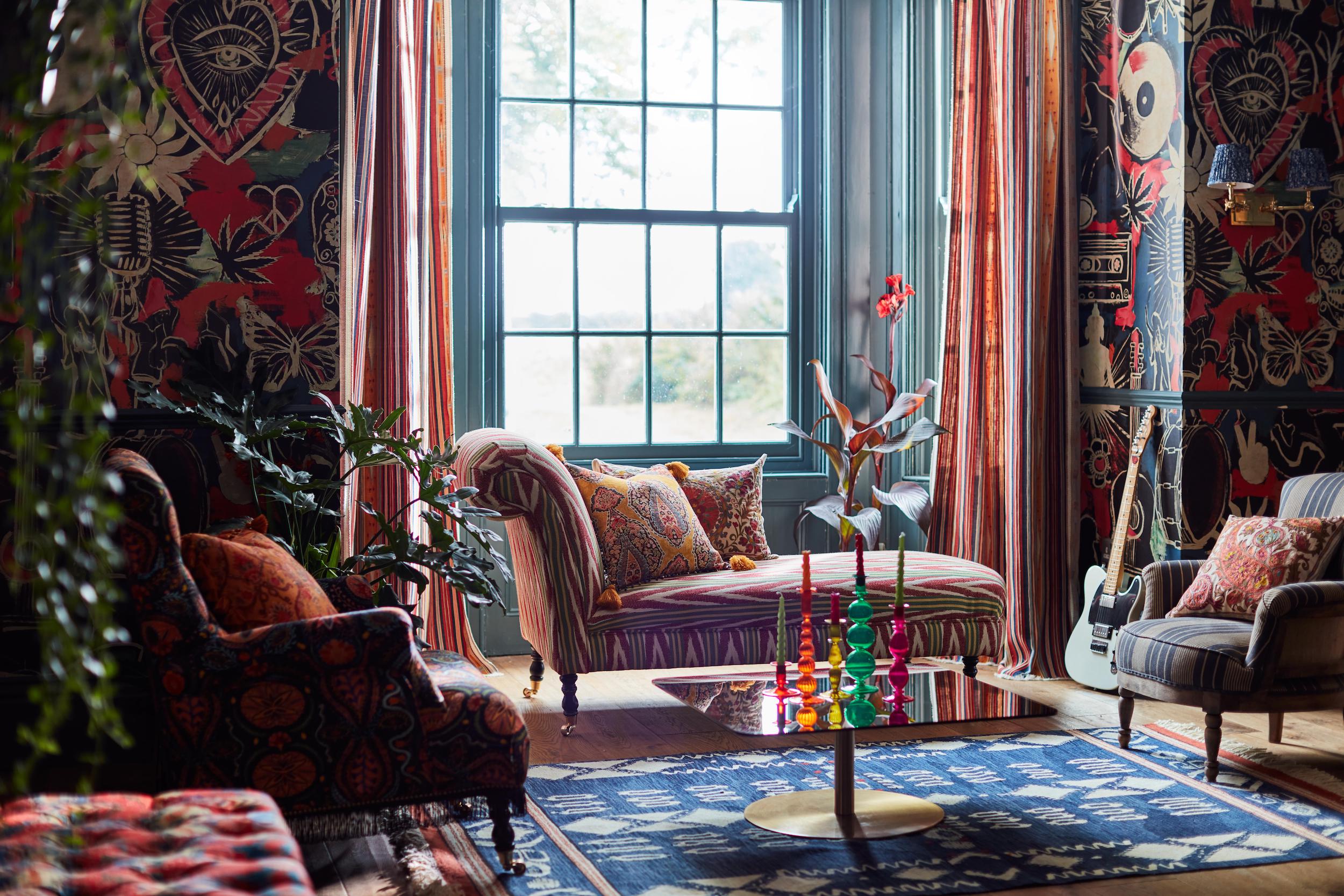
Another standout collection at London Design Week is Transylvanian brand Mindthegap’s riotously colourful Woodstock fabrics and wallpaper range, inspired by the iconic 1969 rock festival, synonymous with America’s 1960s youthquake. This includes the evocatively named designs, Festival Memories, Harmony and Suzie Q – the latter a paean to Creedence Clearwater Revival’s version of the eponymous song. These teem with blousy, boho-chic florals, psychedelic patterns, paisley swirls and such quirky motifs as guitar-strumming rock dudes and cross-legged Buddhas.
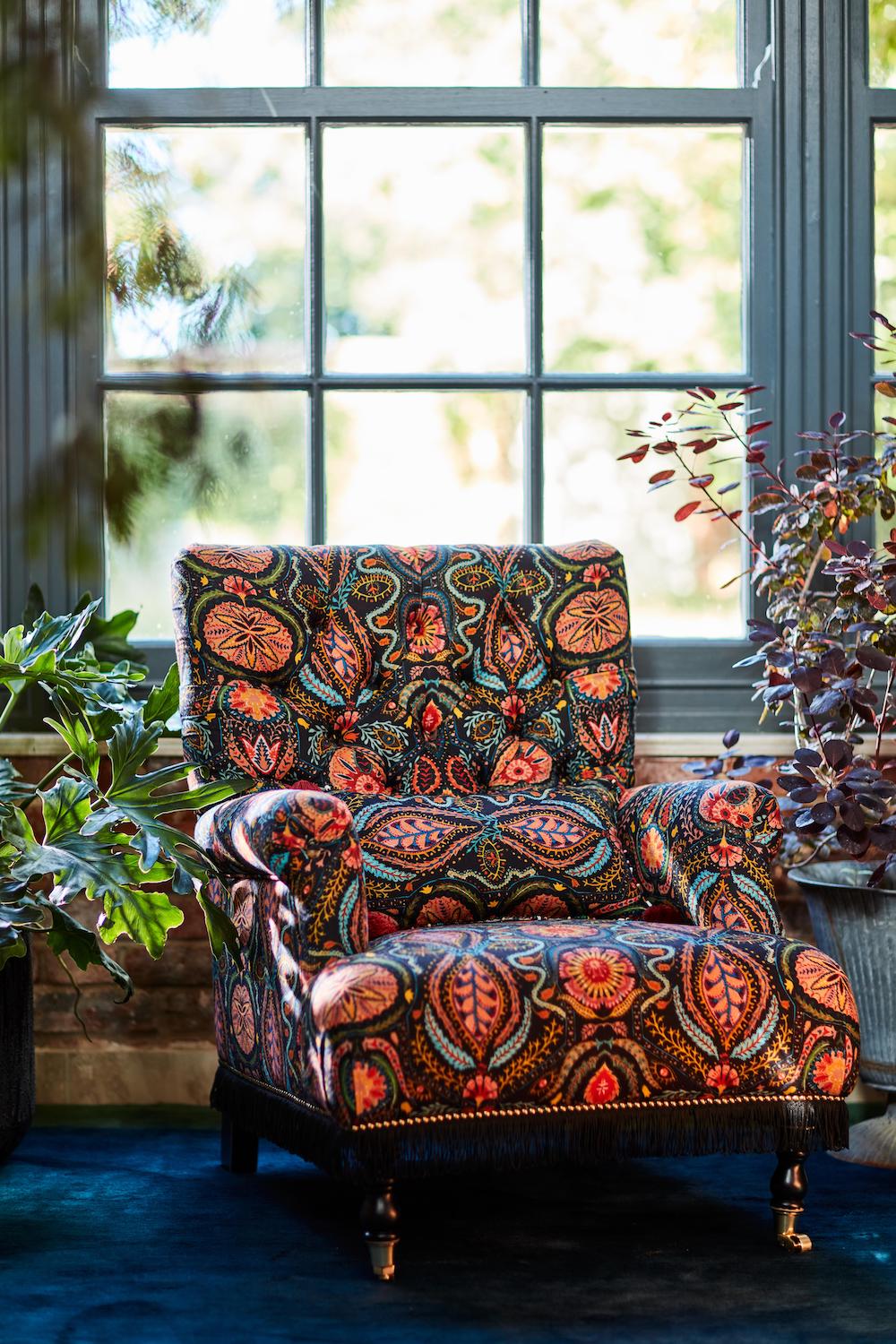
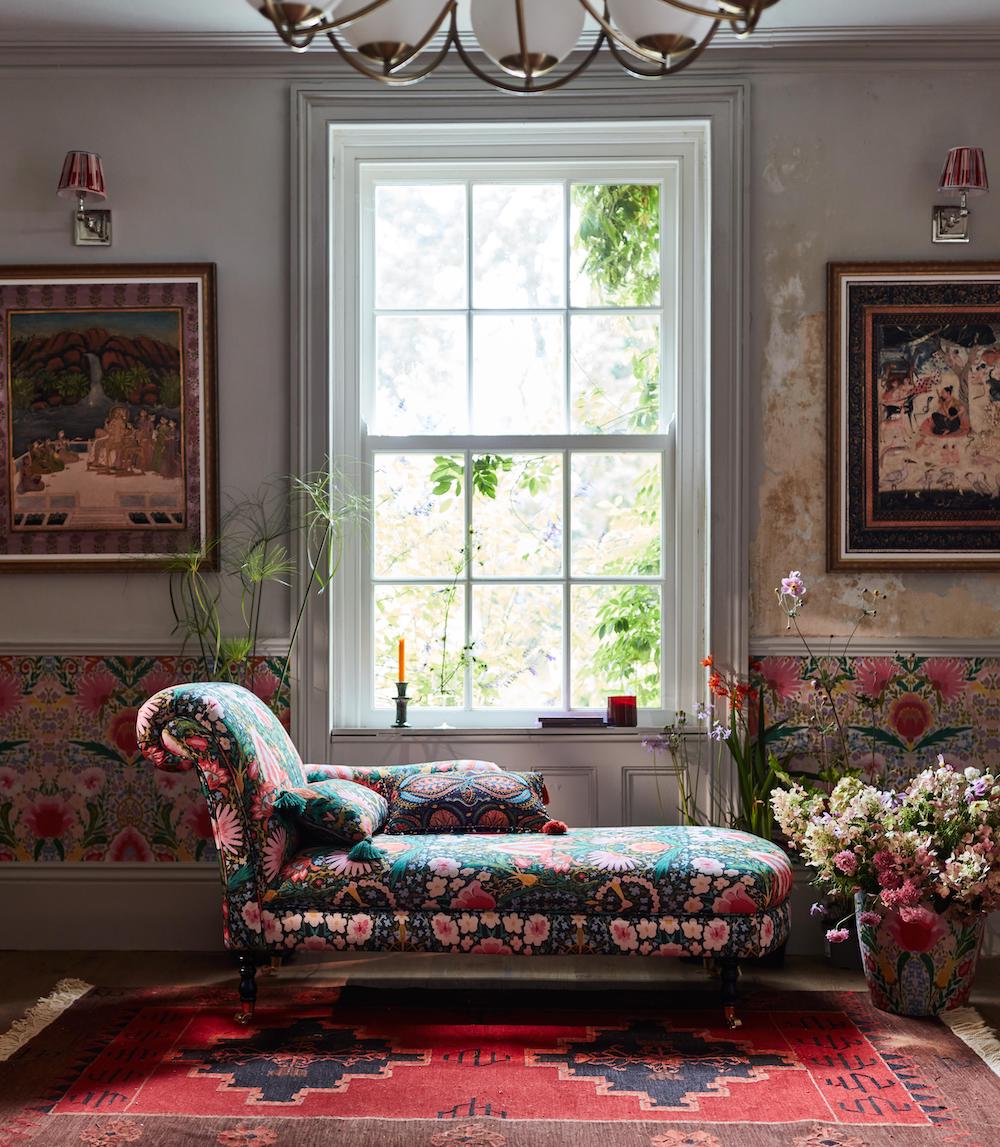
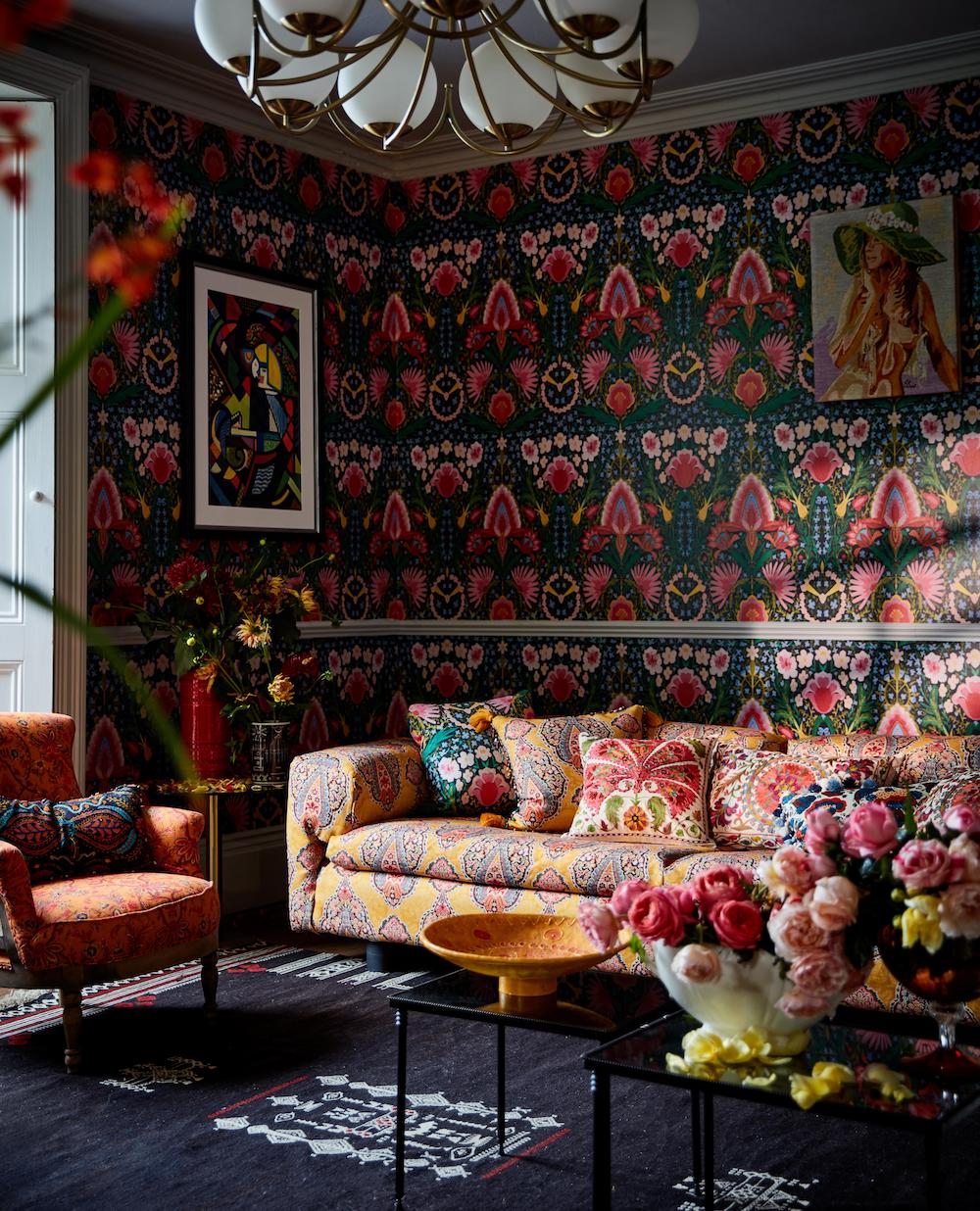
“Over the past few years, we’ve seen our ability to travel lessen and time spent at home increase,” says Stefan Ormenisan, the brand’s founder and creative director. “With this new focus on our homes, we’re seeing people seeking to transform them, finding inspiration in travel, art, music and culture. People are moving away from soulless beige interiors and embracing pattern and colour. For me, decorating is not about emulating trends but about creating a cosy, welcoming, joyful home that is meaningful to its occupants. Woodstock embodies this ‘no-rules’ approach, with swirling forms and colour combinations transporting you directly to the 1960s.”
Rubelli’s new Love Affair fabric collection also has an exotic, escapist vibe, notably in its Magico Mexico design (top left), dreamt up by Mexican illustrator Gabriel Pacheco, whose style has been dubbed “Surreal Visionary”. This whimsical print features cartoony rabbits with pricked-up ears and prickly cacti in acid hues.

“The collection is an ode to nature,” comments Alberto Pezzato, the brand’s design director. “When we created it, we were all looking to be uplifted. More than anything we want our fabrics to inspire and lift emotions. Happiness is often associated with sunshine, so we’ve brought a lot of colour to this playful collection. The Central American references of Magico Mexico are designed to take us out of our everyday emotions to a happier, more positive place. There’s a storytelling aspect to this collection, which is new for us. It takes us out of reality into a fairytale world of exotic lands and imaginary animals.”
While McNie has singled out abstract motifs as a key trend this season, they don’t all take the form of ornate patterns in zingy hues. Colefax & Fowler’s brand Larsen has launched an understated collection of fabrics, some diaphanous, some with thick, tweedy textures, all in cool, neutral hues. These pay homage to mid-century textile designer Jack Lenor Larsen (1927-2020). Lenor’s textiles, often designed for modernist buildings, were inspired by a period living in the Pacific Northwest, where he was exposed to Asian influences.
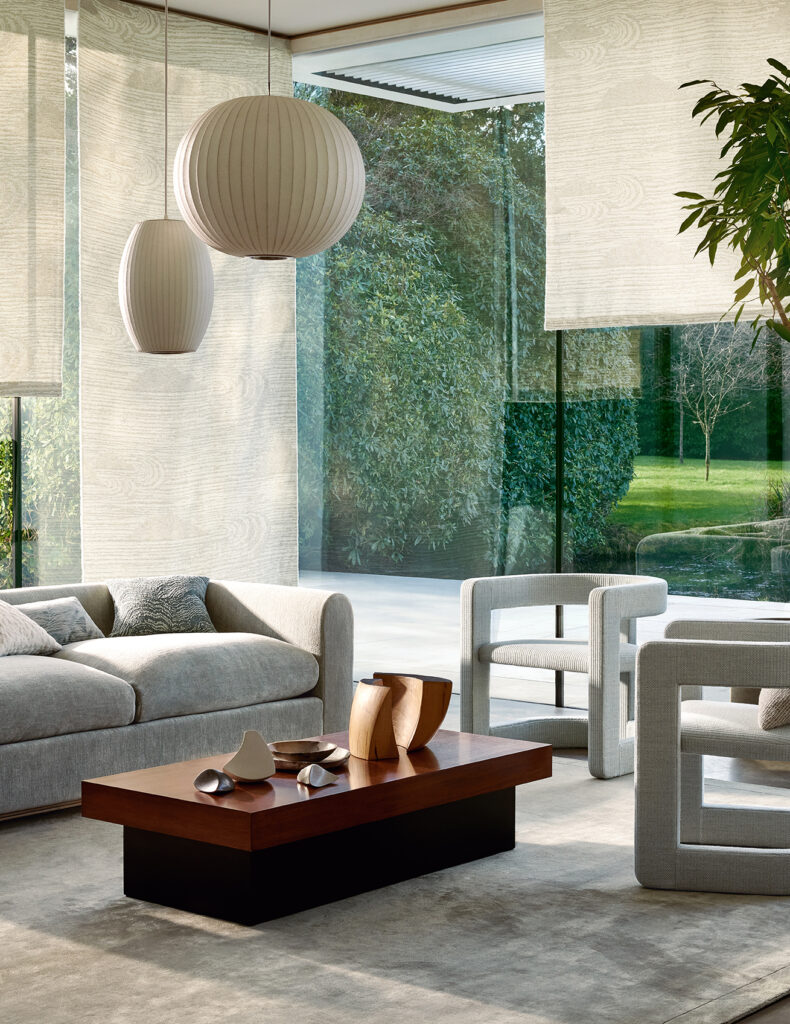

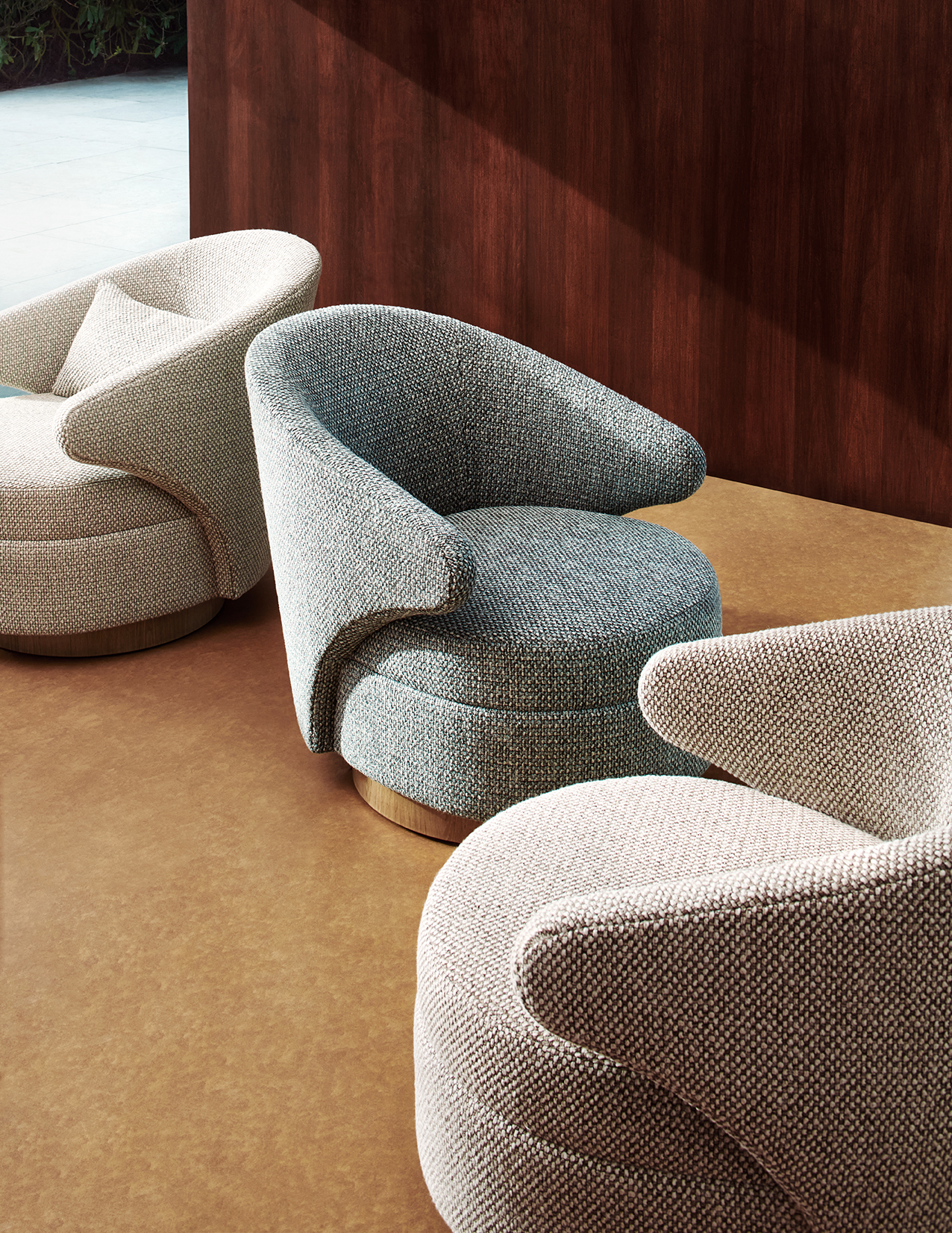
One of his innovations was to give mass-produced fabrics a tactile, hand-woven feel. The Larsen collection can also be found covering sofas and armchairs made by Devon-based furniture company, Kingcome, in a new collaboration between the two brands. While some have reservations about the froufrou excesses of home-furnishing fabrics and their attendant adornments – from piping to fringing – those flocking to Chelsea Harbour continue to delight in their countless permutations, from playful prints to textured, tactile textiles.
Effect Magazine is brought to you by Effetto



